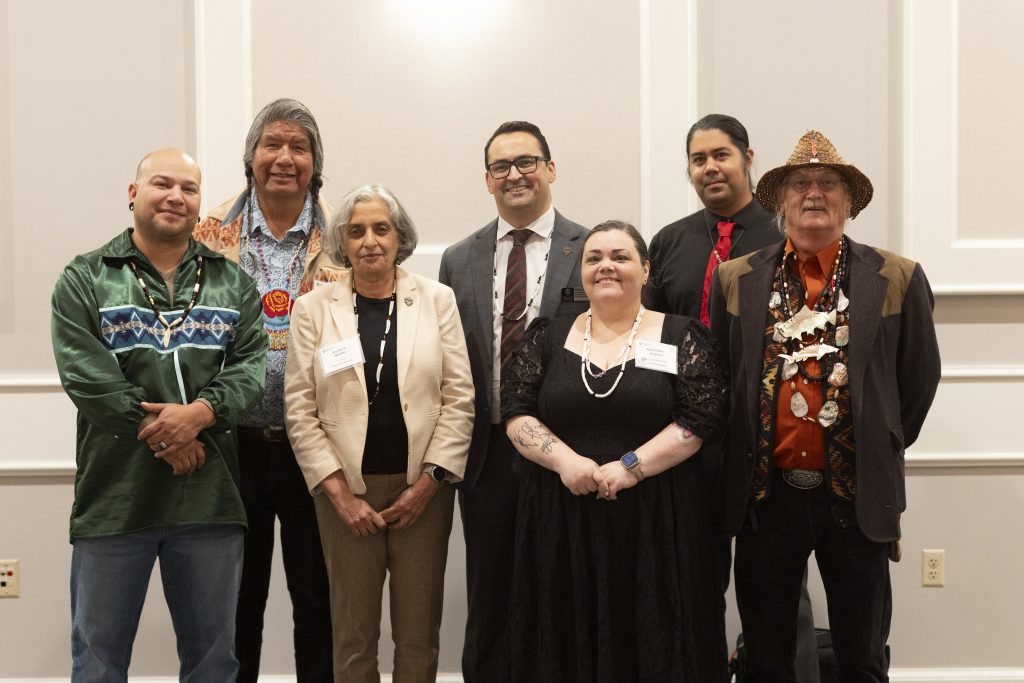Podcast: Play in new window | Download | Embed
The proper repatriation of Native American remains is behind a new facility in Corvallis, Oreg.
As KLCC’s Brian Bull reports, it’s a collaboration between Oregon State University and the nine federally recognized tribes within the state.
Called the “OSU-NAGPRA facility”, the two-buildings are about 2,000 square feet total.
They’re for consultation, records, and storing human remains in accordance with the Native American Graves Protection and Repatriation Act (NAGPRA).
The 1990 federal law mandates the safe return of skeletons, bones, and cultural items to their tribes.
Ashley Russell is director of Natural Resources and Culture for the Confederated Tribes of Coos, Lower Umpqua, and Siuslaw Indians.
She credits sensitive discussions among tribes, OSU, and the state in making this facility possible.
“It’s just very important to us as tribes to have that relationship, and it not be like a transactional thing because these are ancestors. They’ve made their journey, they’re on the other side, and you have to be careful when you navigate those sorts of things.”
Other tribal representatives across Oregon have voiced support for the facility, which may be the first built specifically for repatriation purposes.
Oregon’s NAGPRA Director Dawn Marie Alapisco was pleased with the support.
“This isn’t an ending at all, this is a new beginning. This is a change, a shift in how NAGPRA can and should be performed.”
NAGPRA compliance has been a constant sore spot between many tribes and institutions.
Some universities have retained bones and remains in years past, citing “research” needs.

White raven with a black-feathered companion at a dumpster behind the Spenard Road House Restaurant. The Ravens seemed to especially enjoy discarded tater tots and bread crusts. (Photo: Jennifer Olson)
The odds of a white raven being born are one in 30,000.
Despite those improbabilities, a blue-eyed white raven first appeared in the Spenard neighborhood of Anchorage last October, where it became an instant media sensation.
The bird was last seen in April, when it took off with its family to return to the wilderness, where ravens nest and raise their young.
There’s no guarantee the white bird will be back, but as KNBA’s Rhonda McBride tells us, there is still hope.
White Raven. White Raven. Wherefore art thou? That question echoes across Spenard, as flocks of ravens made their annual October migration into town, where there are plenty of pizza crusts and French fry droppings to tide them over through the winter.
Jennifer Olson goes out every day looking.
“With my limited storage space. I managed to amass about 6,500 photos.”
Olson says it’s hard to delete a single, one.
“Because each moment is different, each little look of the eye. A little tilt of the head. A turn of the beak, or a moment with another bird. The background. It’s endless”
Olson got some of her best pictures near a trash dumpster behind the Spenard Roadhouse. She’s been there too. But alas, so far, no White Raven.
The very first photo posted on the Anchorage White Raven Spottings Facebook page was on October 24 last year.
But Aaron Towarak (Iñupiat) may have been the first to photograph the bird in Anchorage.
On October 20, he took a photo of White Raven and its black feathered companion on the roof of an old, vacant restaurant.
“In some ways it has its own mysticism.”
Towarak remembers the moment well. He was living in a Spenard Hotel room, waiting to get into alcohol treatment.
“And I was just trying to stay active, because I was going through alcohol withdrawal, so I was walking around on Spenard. And that’s kind of when I saw it. It’s a good place marker for my personal journey.”
He said the sight of the bird inspired him and on October 23, he entered a treatment program in Juneau, and now celebrates one year of sobriety.
Towarak says things would come full circle for him to see the White Raven again. He’s wondered how the bird is doing. But if he doesn’t see it, that’s OK too.
“You kinda wonder where they are, where they go off to, what they do. But then you just realize we don’t have control over nature or maybe even ourselves at times.”
Towarak says that’s one of the big lessons of sobriety, is to learn to acceptance.
“A lot of times we want to impose our will on the world, but it’s kind of about letting go of things in your life that you don’t have control over.”
Towarak has regained control of a lot. He spends time with his children, has a good job, and, after a year of getting around on foot and on a bicycle, bought a new car.
Get National Native News delivered to your inbox daily and stay up-to-date on the 2024 Native Vote. Sign up for our daily newsletter today.



